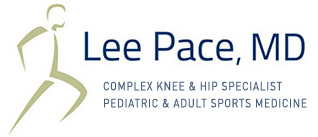Athletes: What to Do When You Get Hurt
Whether you’re a weekend warrior, competitive athlete, regular recreational exerciser or simply an active individual, you know a nagging tendonitis or skin infection can halt you in your tracks. Instead of toughing it out, a sports medicine physician can get you back to an active lifestyle.
What to know about muscle cramps
A muscle cramp is a painful tightness in a muscle due to a sudden, involuntary contraction. Various factors may contribute to muscle cramping, but the underlying cause is often unclear. Muscle cramps are mostly temporary and go away on their own. Some home remedies may help longer lasting cramps pass or ease the symptoms.
Exercises for Hip Pain
Sometimes the best way to relieve hip pain is to start moving more. Although rest and recovery can be necessary to heal an injury, sitting for too long puts added stress on the hips. The right types of exercises build strength, alleviate pain, improve your range of motion, and help protect your hips in the long haul.
Causes of Shoulder Pain and Treatment Options
Shoulder pain has many different causes and treatments. It isn't easy to know the difference between different types of shoulder pain, like a frozen shoulder, shoulder blade pain, or symptoms of a rotator cuff tear. This is why you need to get medical attention if you have shoulder pain—and the treatment is tailored to the cause, your overall health, and your level of activity.
Autologous chondrocyte implantation in the knee: M-ACI has comparable benefit to therapy alternative
Autologous chondrocyte implantation (ACI) has been used in adults with deep cartilage defects for over 30 years and has been further developed and modified over time. For the most recent procedure, matrix-induced ACI (M-ACI), favorable effects have been shown suggesting that the benefits are at least comparable to those of therapy alternatives.
Why physical activity matters now more than ever
Exercise not only helps people with long-term conditions better manage their health but also boosts the immune system. So how can we support more people to be physically active?
How to treat a bruised knee
Most bruises, also known as contusions, are mild and heal on their own. However, more severe contusions can damage muscle tissue or bone, which may take longer to heal.
Is There Such a Thing as ‘Good Pain’ and When Should You Listen to Your Body?
Weight-bearing and cardiovascular activities stress the body. As a result of that stress, we enhance our strength and endurance. By pushing our physical boundaries, we optimize our athletic performance. But this process is almost always at the cost of feeling some level of pain.
What to know about kneecap dislocation
A kneecap becomes dislocated when the patella bone, which sits at the front of the knee, comes out of position. In the process, the connective tissues that hold the bone in place may stretch and tear..
Transient Osteoporosis of the Hip Overview
Transient osteoporosis of the hip is a condition that occurs for unknown reasons. The condition is characterized by a spontaneous onset of hip pain associated with x-ray signs of osteoporosis and MRI evidence of bone inflammation.





